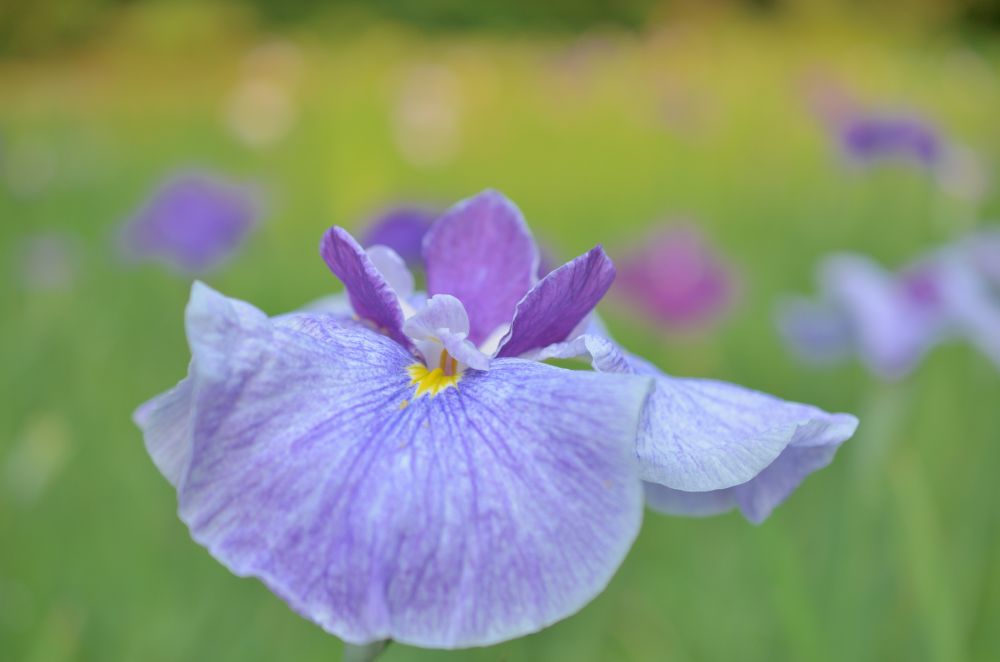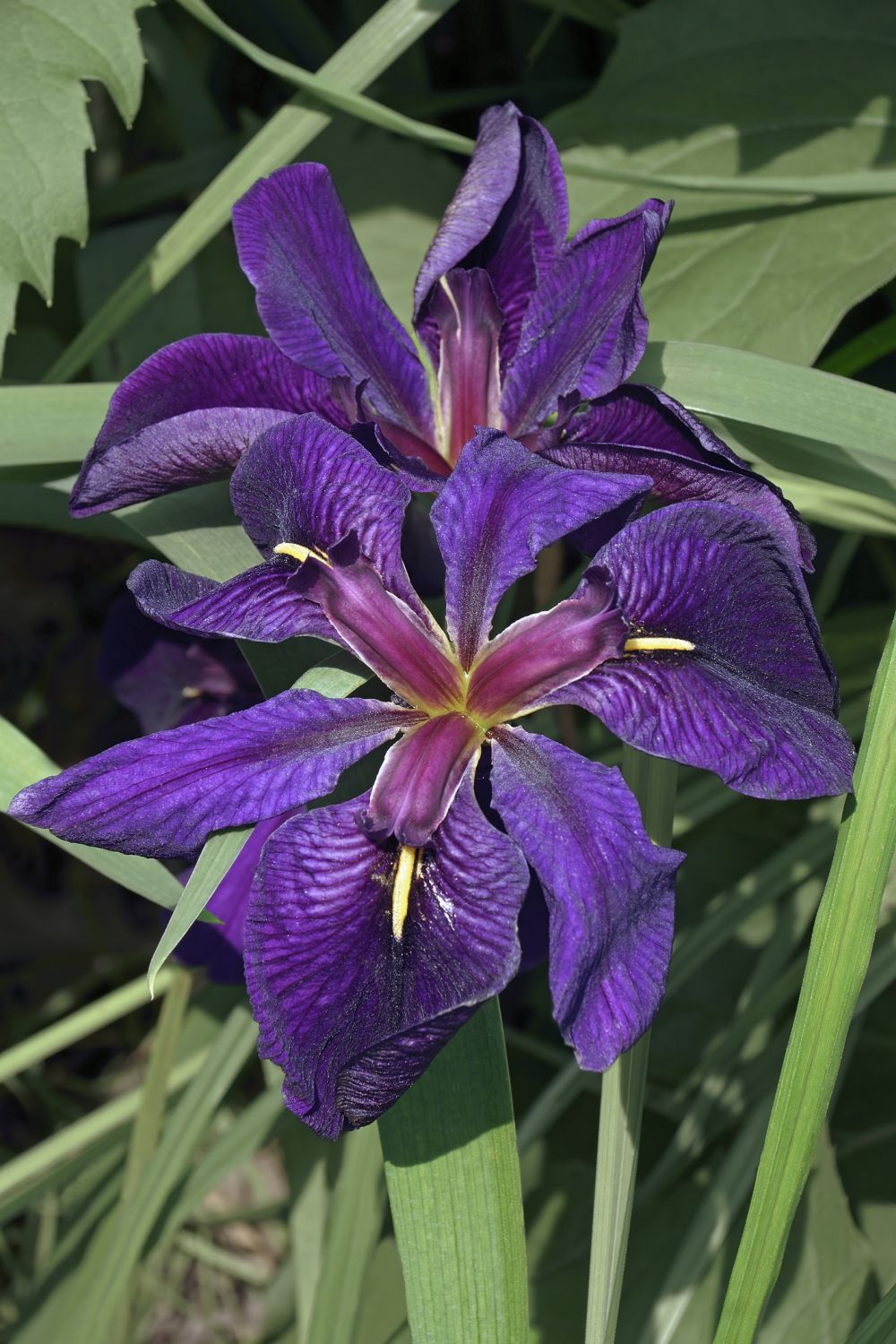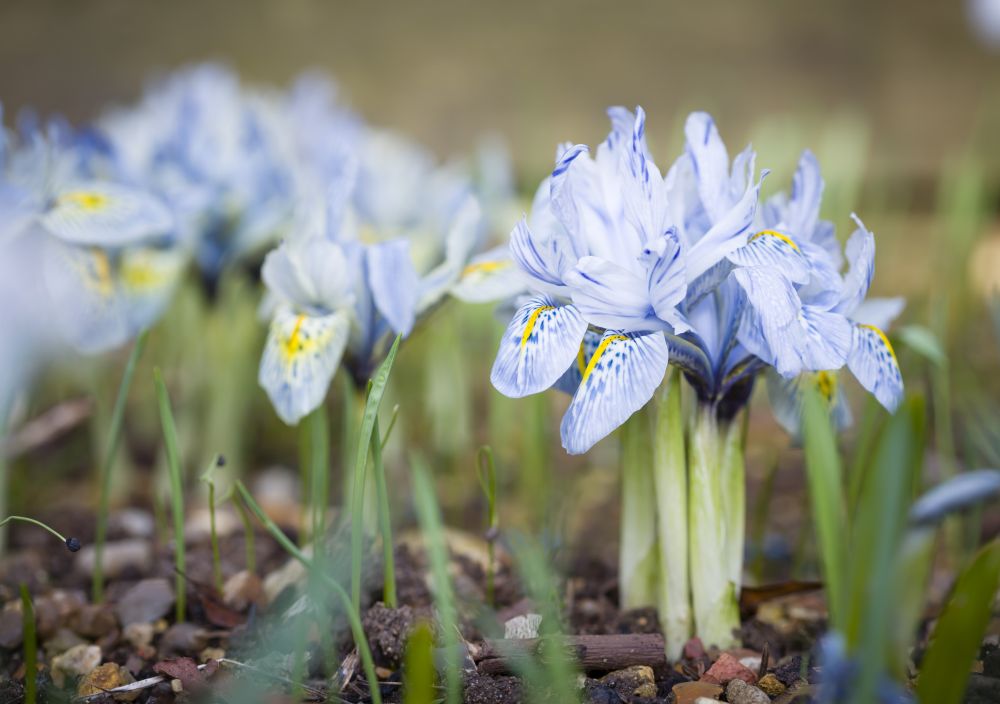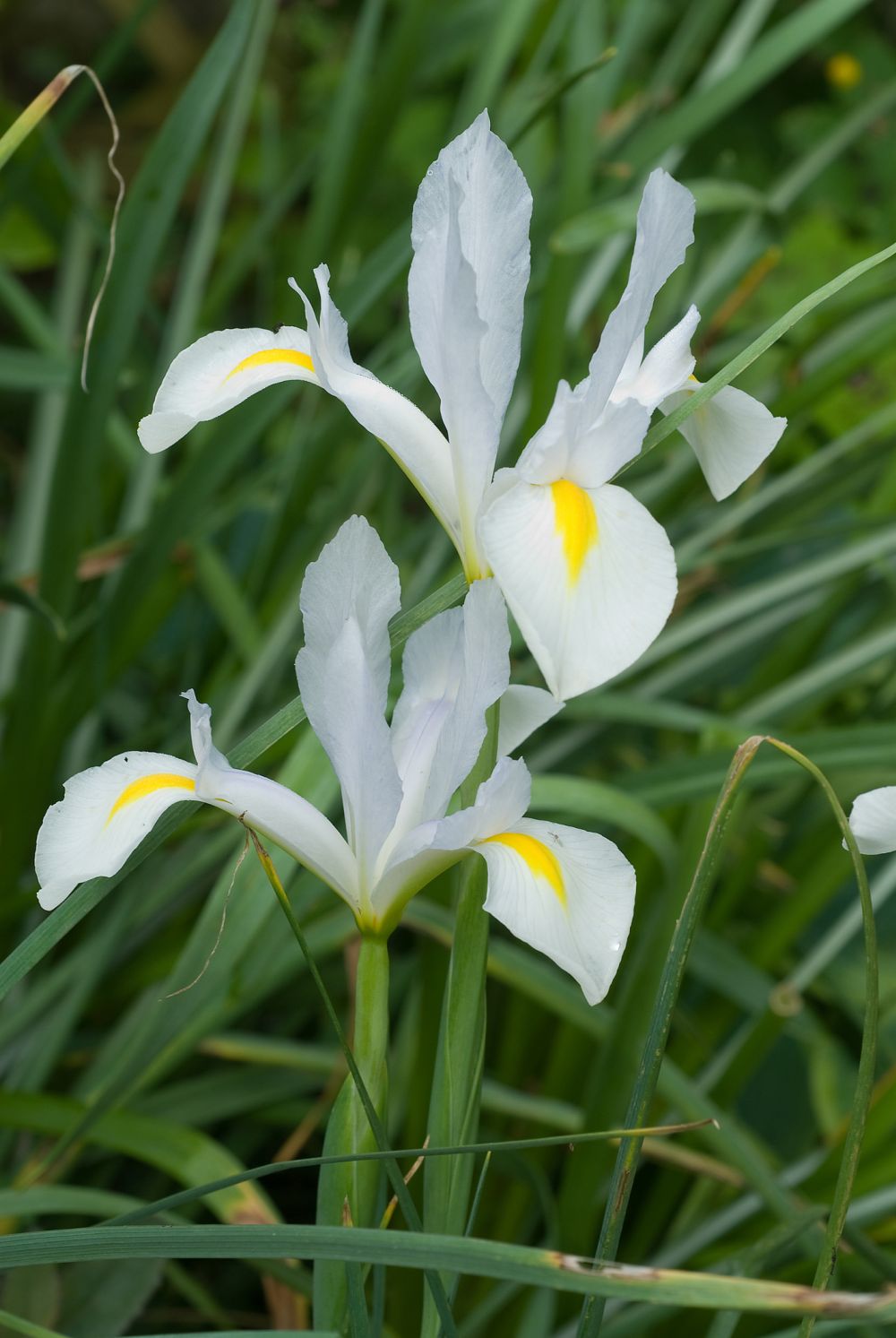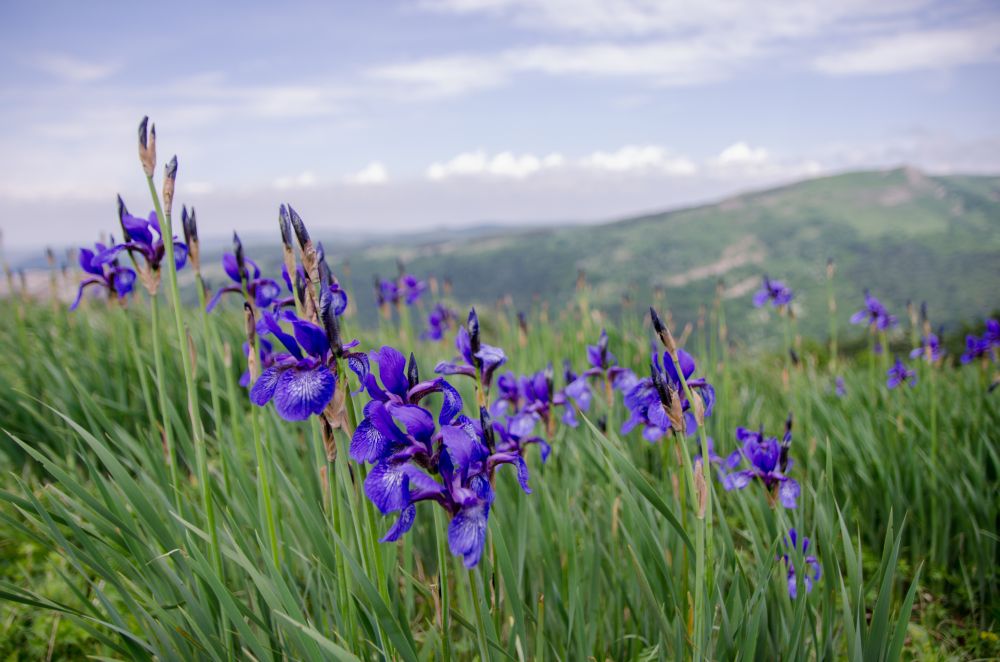Iris Types And Varieties – Different Iris Types To Grow In The Garden
It might surprise you how many iris varieties there are. The iris flower has always enchanted poets and people of sensibility for centuries. But this is more than an ornamental plant. In almost every culture where the iris flower grew, people have found different uses for it. Most notable of those are medicinal benefits where the roots were used to relieve coughs and as a purgative element. Traditional medicine still recommends iris root tea as a treatment for many digestive problems.
But you don’t have to be into homeopathy to grow the delicate iris plant. The ornamental and landscaping uses of the flower are abundant. And with so many varieties to select from, the question becomes which iris variety to grow.
We simplified this process for you and listed the most popular iris varieties below and what makes each variety stand out. But first, we take a closer look at the generic iris types.
Types of Iris
Despite their many growing problems, the flamboyant iris is still worth all the sweat and toil you put into it. But to help you identify the iris growing in your garden, you need first to know its type. The two main iris types are bulb and rhizome.
Bulb
Choose bulb irises or bulbous irises if you like to have your floral plants bloom early in the spring. These types are usually compact in size and don’t need much care or pruning. That makes them ideal to grow in containers or planters. After the bloom season, the plants become dormant until the next spring. Their maintenance requirements are quite limited and they don’t need much experience with floral plants to grow them. The best varieties that fall under this category are Reticulata and Dutch irises.
Rhizome
The majority of iris varieties belong to the rhizome type. These are large plants that spread out and stand tall. They need more space than bulbous irises so growing them in containers can be a challenge. The stems and foliage all grow out of a large rhizome. On average these types can reach three feet high at maturity. They are late bloomers and the first flower to open will be around late spring or early summer. Surprisingly, most of the plant’s mass grows under the surface of the soil. The rhizomes produce new pups that grow into new shoots. Rhizome irises are further subclassified into crested, beardless, and bearded types.
Iris Varieties
Choosing one iris variety over another can be daunting. For one thing, they all have exquisite flowers and it’s hard to have a favorite variety or cultivar. So it all comes down to personal preferences. I recommend starting your iris journey with a couple of varieties and keep trying out new cultivars every year. You’ll soon shortlist them into two or three varieties at most. These will become your go-to iris cultivars.
Dutch Iris
The Dutch have a vast experience with flowers. While tulips are their specialty, it turns out that the Dutch know one thing or two about irises as well. And to prove that, they offer us the Dutch iris. The most striking feature of this variety is the various colors. The blooms range from white to golden, purple, and blue. Sometimes the petals will have more than one color.
Another fascinating property of the Dutch iris is that the petals are not always aligned. While you’ll have three petals facing upwards, the other three will droop creating a dramatic atmosphere. If you’re new to irises of any type, I recommend you start with this cultivar.
These hardy flowers can tolerate different types of soil and pH levels. From slightly acidic to neutral and a little alkaline, you can grow this beauty anywhere without facing any problems. Just make sure the soil is loamy and well-drained.
Caring for these flowers is easy as well. To prevent the cultivars from producing seeds, deadhead the flowers regularly. After the end of the blooming season, remove the dried leaves and let the plant go dormant throughout the fall and winter. Perennial Dutch irises usually come back to life in the spring. They are suitable for zones 5 to 9 and bloom between late spring and early summer. The average plant grows to 24 inches high. Plant them in full sun or partial shade.
German Iris
Not to be outdone, the Germans came up with their own iris cultivar which naturally they named after themselves. But in some gardening circles, these cultivars are also known as bearded irises. The reason for the mysterious name is that each bloom has 4 drooping petals at the bottom that look like a beard from a certain angle. Whatever name you like to call it, this cultivar never fails to amaze with its variety of colors and hues.
While some flowers can have solid colors such as white, pink, yellow, or purple, others will have different hues of these colors. So you can create a row of purple shades next to one with pink hues and so on. The landscaping options here are practically limitless.
German iris cultivars are suited for zones 4 to 9 since they are more cold tolerant than their Dutch counterparts. They are also late bloomers and the first flower will emerge in mid-spring. But don’t write them off once the last flower has faded. Not so fast. The German iris has the ability to rebloom sometime in the late summer.
The average plant grows between 20 to 40 inches tall and it loves full sun. If you live in a warm zone where the afternoon sun becomes too fierce, you might want to offer the plants some shade. It will protect the foliage from burning and the flowers fading before their time. You can grow it in any type of soil from clay to sandy or loamy. As long as the soil is well-drained and sufficiently fertile, the iris is happy to grow year after year.
Dwarf Iris
As the name implies the dwarf iris is a diminutive plant that doesn’t exceed 6 inches. Sometimes an exceptionally tall dwarf iris grows to 8 inches but that’s rare. What this means to you is that it’s the right cultivar to grow in your balcony or in a pot on a window sill. No matter how small your garden is, the dwarf iris is not very picky.
You can grow this cultivar in zones 4 to 9 and it requires 6 hours of full sun every day. So make sure to place it near a window facing the west or south. The dwarf iris is not just limited in size but also in color varieties as well. The flower blooms either in purple or blue hues. But don’t let that color selection limitation put you off. These cultivars have a lot going for them that makes up for their lack of color options.
One of those properties is their early blooming date. The dwarf cultivars will open up in the late winter long before any other iris has even shown any signs of life. And when they open up they dazzle with the patterns they create. First, there will be three large petals stealing the show. Supporting them are three less prominent petals that act as a side kick to the stars of the show.
Plant these bulbs in the fall and choose loamy and well-drained soil for best results. Don’t leave fading flowers on the plant since they take up a lot of precious resources and stop new flowers from growing. Deadhead the flowers as soon as they enter the seed production stage.
Louisiana Iris
So far we have been reviewing iris cultivars that can tolerate warm zones up to zone 9. But what if you live in zone 10 for example? Does that mean that irises are off-limits in your garden? Not at all. The Louisiana iris is here to save the day.
As beardless types, the Louisiana has a high tolerance for high temperatures and humidity levels. One drawback to that tolerance is that the flowers are late bloomers. You’ll get your first iris sometime in the middle of the summer. The flowers come in one color option, purplish-red. But to sweeten the deal for you, each flower has a combination of colors. The five outer and more prominent petals are purple while the three petals in the middle are red with some yellow shades. So even though you cannot create a multi-colored floral arrangement from it, the ravishing flowers are undoubtedly the center of the floral piece.
You can grow these lovely irises in humid conditions along the side of ponds and water streams or in drier conditions. They are hardy and can tolerate different conditions. One thing they cannot tolerate though is dry soil. Drought is the number one enemy of these cultivars. So maintain moist soil throughout the growing and flowering seasons until the plant goes dormant in the mid-fall.
Plant the rhizomes in the spring and watch them bloom in the first season. They average around 36 inches tall and require at least 8 hours of sunlight every day. And like the other iris cultivars, you should remove the fading flowers to allow new flowers to bloom.
Japanese Iris
Japanese flowers are known for their dreamy and delicate colors. It’s like an artist paints every flower with watercolors. The Japanese iris is no different. The variegated petals shimmer with pink, blue, yellow, and white hues. You might even call them showboats. They certainly get your attention with their large blooms.
These cultivars love moist soil so much, they often grow near ponds and lakes. You can plant the rhizomes in the spring and expect the flowers to open up in the early summer. Japanese irises don’t have the same tolerance for heat as the Louisiana cultivar and grow best in zones 4 to 9. In warm zones when the weather gets too dry, you’ll need to protect the cultivars from the afternoon sun.
Another catch with these flowers is that they have a low tolerance for drought. In the height of summer, you might need to water them every day just to keep the soil moist enough. This is especially true if you grow these grandstanding blooms in containers. The soil in pots dries out faster than in the garden. So watering becomes a daily chore.
The average cultivar grows between 24 to 48 inches high making it easy to grow in containers as well as outdoors. It thrives in full sun but partial shade is needed in hot and dry climates. Make sure the soil drains well to prevent waterlogging.
